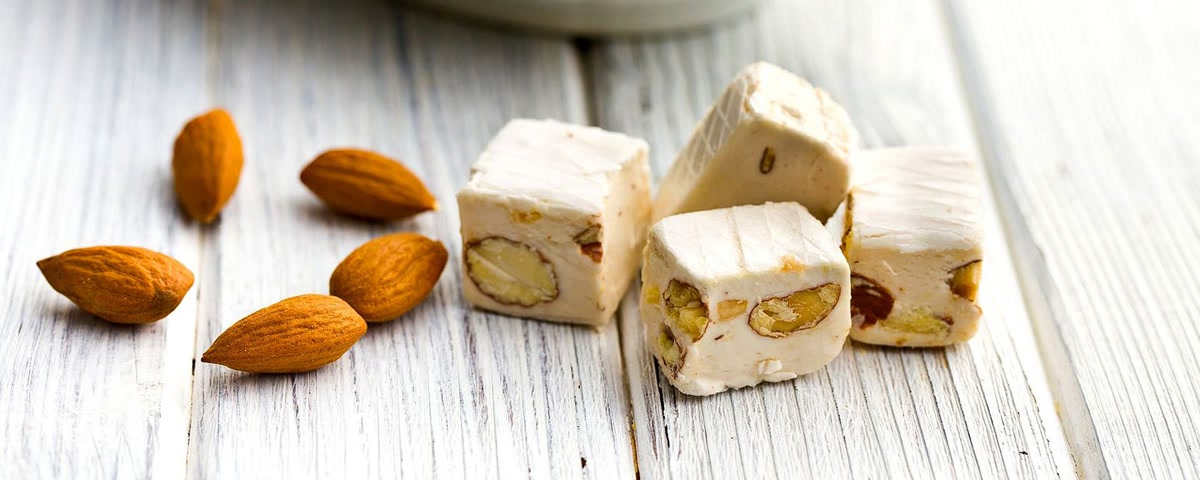At the Christmas Day table, there may be some argument between panettone diehards and pandoro instigators about which cake is better, but few dispute that the gooey white, sticky nougat-type confectionary made of sugar, egg albumen and almonds is delicious. All over Italy, this candy, known as torrone, appears at the end of the traditional yuletide meal, sometimes in long, rock hard or scrumptiously soft bars or, nowadays, even as individually wrapped pieces that may be coloured or covered with chocolate. Yet many of its devotees, whilst claiming their chosen torrone is the best, cannot agree on its origins, which are shrouded in mystery.
The city of Cremona in Lombardy has long proclaimed itself as the home of classical torrone. It maintains that the sweet was served there for the first time at the lavish banquet after the marriage of the Tuscan-born mercenary Francesco Sforza to Bianca Maria Visconti on October 2, 1441. Thanks to Bianca Maria, who was the daughter of the Duke of Milan, Sforza would succeed to this title and find support and an ally in his friend Cosimo de’ Medici. The torrone served at the marriage celebrations was made in the shape of the Torrazzo, the bell tower of Cremona’s cathedral. But it may well be that torrone arrived in Cremona long before Sforza and his nuptials. In the 1200s, it seems that the gourmet Holy Roman Emperor Frederick II frequently visited the city, bringing with him a plethora of cooks to cater at his grand feasts and ceremonies. Through trade and the crusades, he was familiar with and fascinated by Arab culture, including the food, so he could have brought the torrone recipe with him. He may also be responsible for why we eat it at Christmas time because legend has it that the emperor always ate an exotic sweet, perhaps torrone, on his birthday, that is, on December 26.

There is further evidence, however, that torrone in Italy has an even longer past. Some historians say that the Romans learnt of it from the Samnites during the years of the wars between them in the third and second centuries BCE. In fact, Benevento and other towns in the Apennine ranges, apart from their Samnite ancestry, have, since the 17th century, boasted three different varieties of torrone, or “cupeta” as it is known there: “perfect love” made of honey, egg white and nuts, usually covered with a chocolate, lemon or coffee paste; the “ingranito” consisting, apart from the usual ingredients, of long, thin sugared almonds called “cannellini”; and the “Pope’s torrone” made with liquified sugar, pine nuts and candied fruit. Later, Ferdinand I, King of the Two Sicilies, helped popularize the “Queen’s torrone”, dedicated to his wife, Maria Carolina of Austria, which was similar to that of the Pope but was covered with almond paste.
Another school of thought is that the Arabs brought torrone with them to Sicily and from there it spread throughout southern Italy. Likewise, the Arabs took it to Spain and it reached France and northern Africa. In his book De medicinis e cibis semplicibus, the Arab physician of Cordova, Abdul Mutarrif, praises the sweet called the turron, made of honey, almonds, sugar and spices. Some linguists believe that the word turron, meaning “roasted”, from which the word torrone derives, comes from turrar, “to roast” from the Latin torrere, “to toast”. Others say the word has an Arabic root.
Notable because it is made with honey without added sugar and is soft and amber in colour, the torrone from Sardinia is unique. Some of the best comes from the mountaintop villages of the Barbagia, which are surrounded by chestnut, hazel and walnut woods. For generations, artisans have made torrone in villages like Tonara, Desulo and Aritzo. These three towns are so famous for the confectionary that the 30 kilometer stretch of road between them is known as the “torrone route” and is a drawcard for tourists. Another town in Sardinia, Pattada in the province of Sassari, is renowned not only for its manufacture of switchblade knives but also for its torrone. Locals say that, in 1640, during the Spanish domination of the island, the men of King Philip IV brought the recipe for it when they came in search of wood and coal in the nearby mountains.
In Naples, torrone is also present on another important occasion. It is bought for the feast day of the dead when, according to tradition, on the night between November 1 and 2, the souls of the dearly departed come down to earth and visit their loved ones. For them, families prepare a dish with torrone on it, but it is softer than the torrone eaten at Christmas and covered with chocolate.








